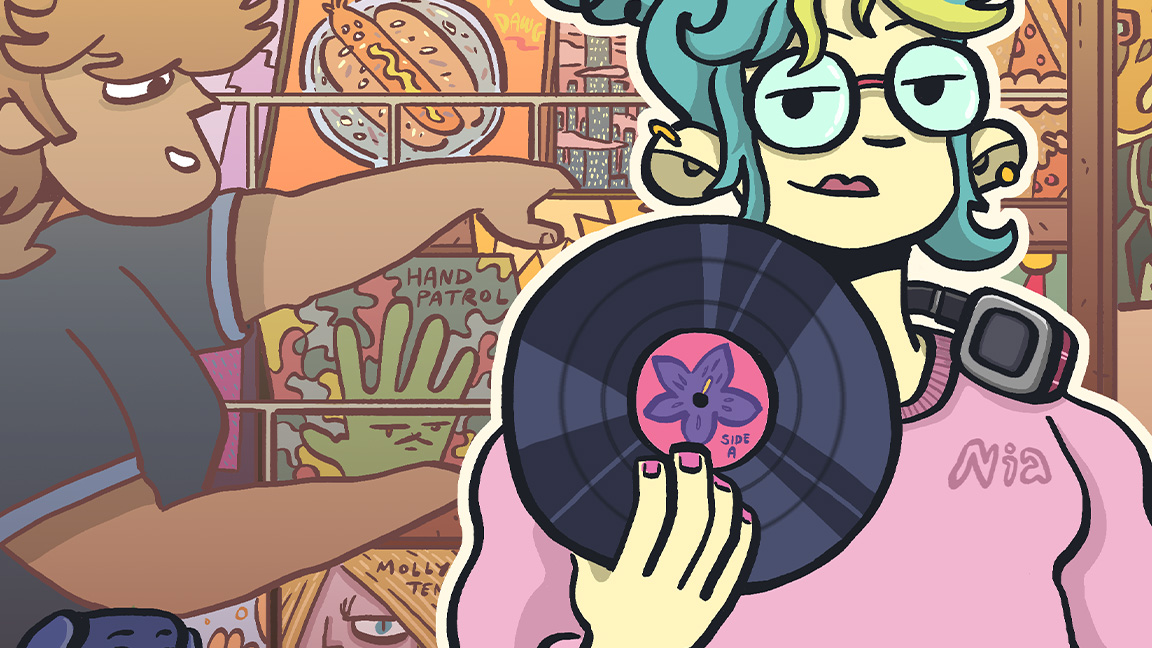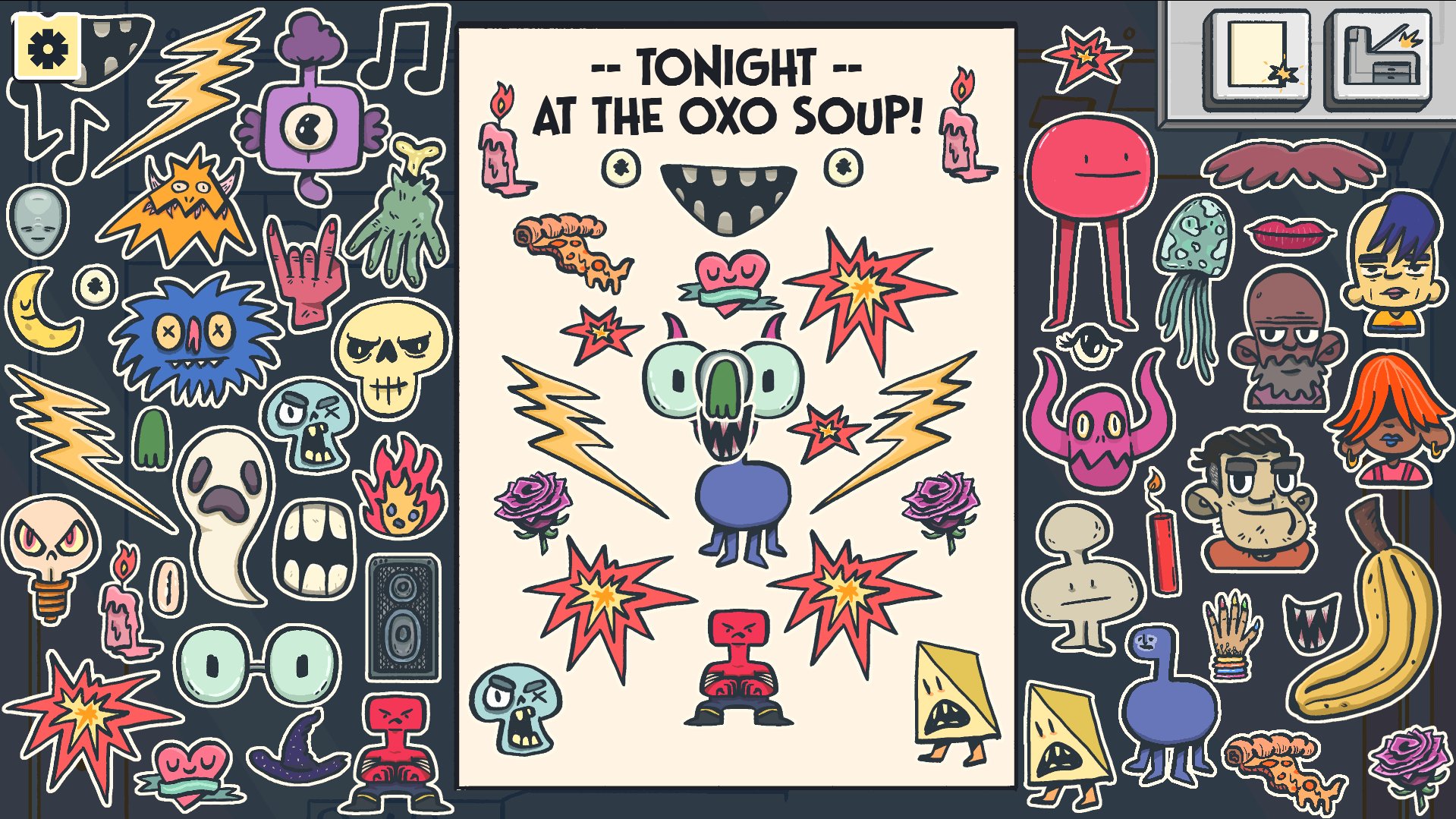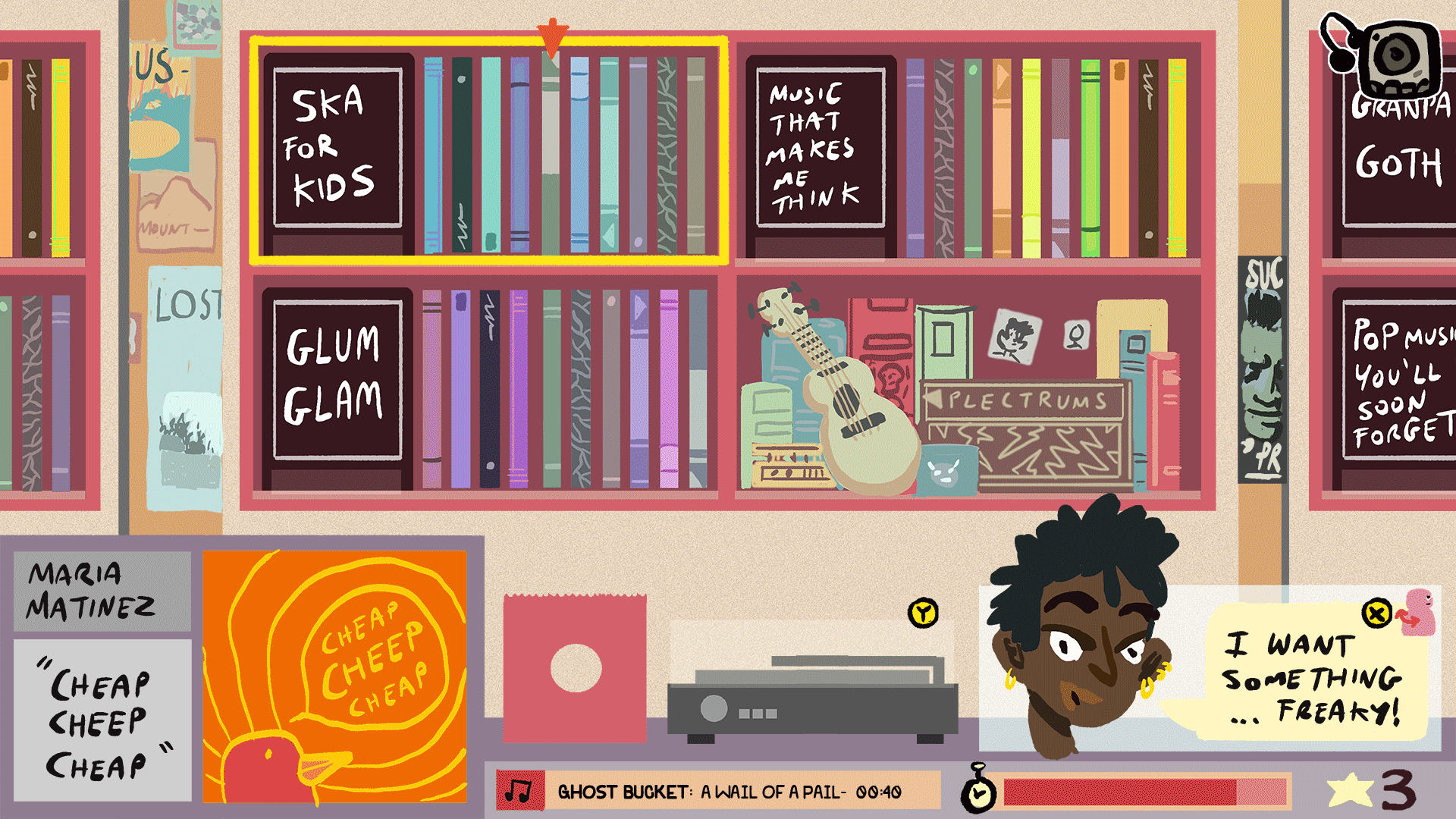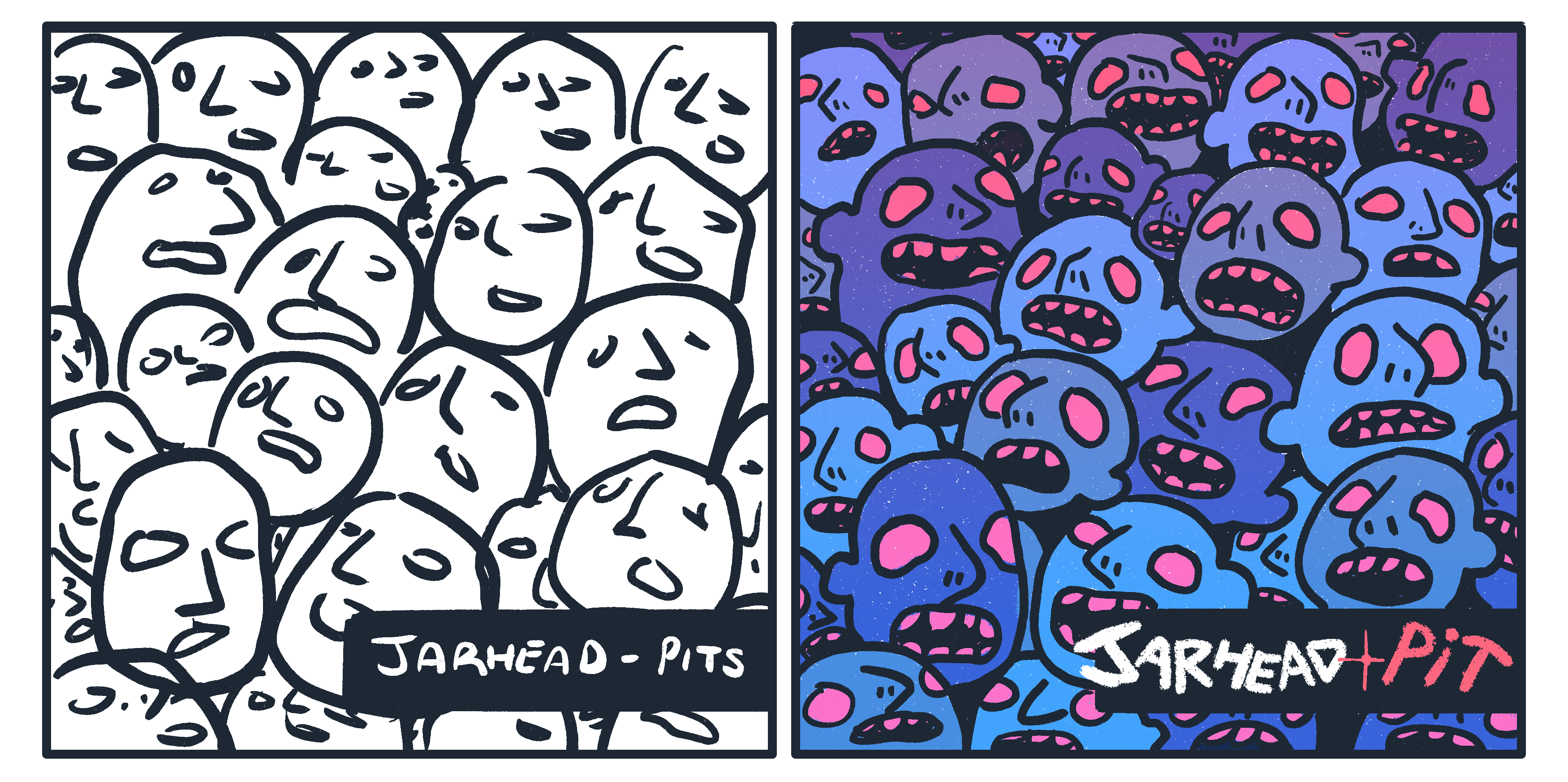How Wax Heads hand-drawn 'cosy-punk' aesthetic was made using Godot
Pattatie Games' Murray Somerwolff on recreating a music store narrative game with a brash post-punk comic book style.

Wax Heads is an indie game made in Godot that puts you in charge of a record store, and in many ways feels like one of the most current, zeitgeist ideas I've come across – and I just finished talking to the dev behind Promise Mascot Agency.
Spotify may have killed music in a lot of ways, but the flip side of that is that vinyl sales continue to increase, showing signs that people still value physical media. Having moved home a few months ago, I've also been blessed to find that there's a local record shop just a short walk, where I can just dip in, have a browse or get some recommendations from the friendly and knowledgeable owner, a deep contrast to the kind of music snobbery you might associate with John Cusack and Jack Black's characters in the film High Fidelity.
That's also the inclusive vibe that Murray Somerwolff, the co-creator of Wax Heads, wants to achieve with his game, which has you managing a struggling record store, which he has also marketed as, with tongue firmly in cheek, 'cosy-punk'. "I really didn't want to make a game which had this feeling of you needing to have knowledge coming into it, if people love music, that's great," he tells me. "I wanted to try as much as not to make something which is particularly snobbish."

Wax Heads is a hand-drawn marvel
That's not to say it doesn't have its own firm identity, as Somerwolff's hand-drawn art for the game, from characters to the records themselves, are based on his own tastes. "I've got this affinity of post-punk, I used to live in London and go to a lot of gigs with posters that had this washed out kind of graphic novel style, so when I see it in my head there's just this kind of vibe that taps into it," he explains, while also referencing Bryan Lee O'Malley's Scott Pilgrim series. But Repeater Records doesn't just stock post-punk or punk, that visual style gets applied to a variety of genres, from female pop artists to male choirs.
For a game about music, it's the visuals that are especially important, which is also true when I go record shopping. While some places might let you listen to it before you buy, quite often you're actually picking it based on the cover art. Somerwolff agrees: "When I was growing up, the CDs I remember buying and my favourite bands I discovered was just because I saw the CD cover and it just feels like it's talking to me."
It's also core to Wax Heads' gameplay because your customers will often only have a vague idea of what they're after, and so it becomes a case of social deduction where you try and figure out their request and find the correct record, sometimes based on the cover art, perhaps other clues like a note left inside, or just whichever is the newest or cheapest on sale.

For designing the store, Somerwolff looked at other games that have a customer-facing interface, such as Strange Horticulture, Coffee Talk, and even to some extent, Papers, Please, though having to search for records means you also get to leave your register desk to navigate the labyrinthian design of the store, covered adorned with records, posters, and even an arcade cabinet.
Daily design news, reviews, how-tos and more, as picked by the editors.
Perhaps what's most punk about Wax Heads is the decision to develop the game with Godot. Somerwolff explains that he had learned more about the free open-source engine when he was sharing an office space with someone who was also working as part of the Godot team, although the decision had been as a result of Unity's controversial runtime fee that has since been scrapped.
Yet while Godot has its own native GDScript programming language that Somerwolff describes as being "a bit more gentle" than learning C++ or C#, he admits his lack of programming expertise meant he was still struggling, having first designed the social deduction aspect of finding the right record with Twine instead. Fortunately, he found a partner in Madrid-based Rocío "Rothio" Tomé, the other half of Pattatie Games, who handles the programming, as well as co-designing and SFX.

The agility of Godot Engine
As a former Unity developer support engineer, Tomé has not only embraced Godot but also regularly streams on Twitch, sharing her development process and expertise in Spanish.
"Orignally, she was going to help me learn but once we started working, she's made tools where I can work in Godot, I can change characters, I can write dialogue," Somerwolff explains. "I can basically do whatever I want and kid myself that I can use Godot, and then she has to remind me, 'No, I made Godot work so you can use it'."
In other words, while Godot does require programming knowledge, it's still possible to make tools that make it as accessible with drag-and-drop functions as Unity or Unreal Engine, provided you find someone who can build those tools in the first place. (For more, read what indie devs think of 'no-code' game engines, and our guide to the best game development software.)
Wax Heads is coming to PC and Xbox, and while the release window isn't until Summer 2026, you can play a demo now on Steam.

Alan Wen is a freelance journalist writing about video games in the form of features, interview, previews, reviews and op-eds. Work has appeared in print including Edge, Official Playstation Magazine, GamesMaster, Games TM, Wireframe, Stuff, and online including Kotaku UK, TechRadar, FANDOM, Rock Paper Shotgun, Digital Spy, The Guardian, and The Telegraph.
You must confirm your public display name before commenting
Please logout and then login again, you will then be prompted to enter your display name.
